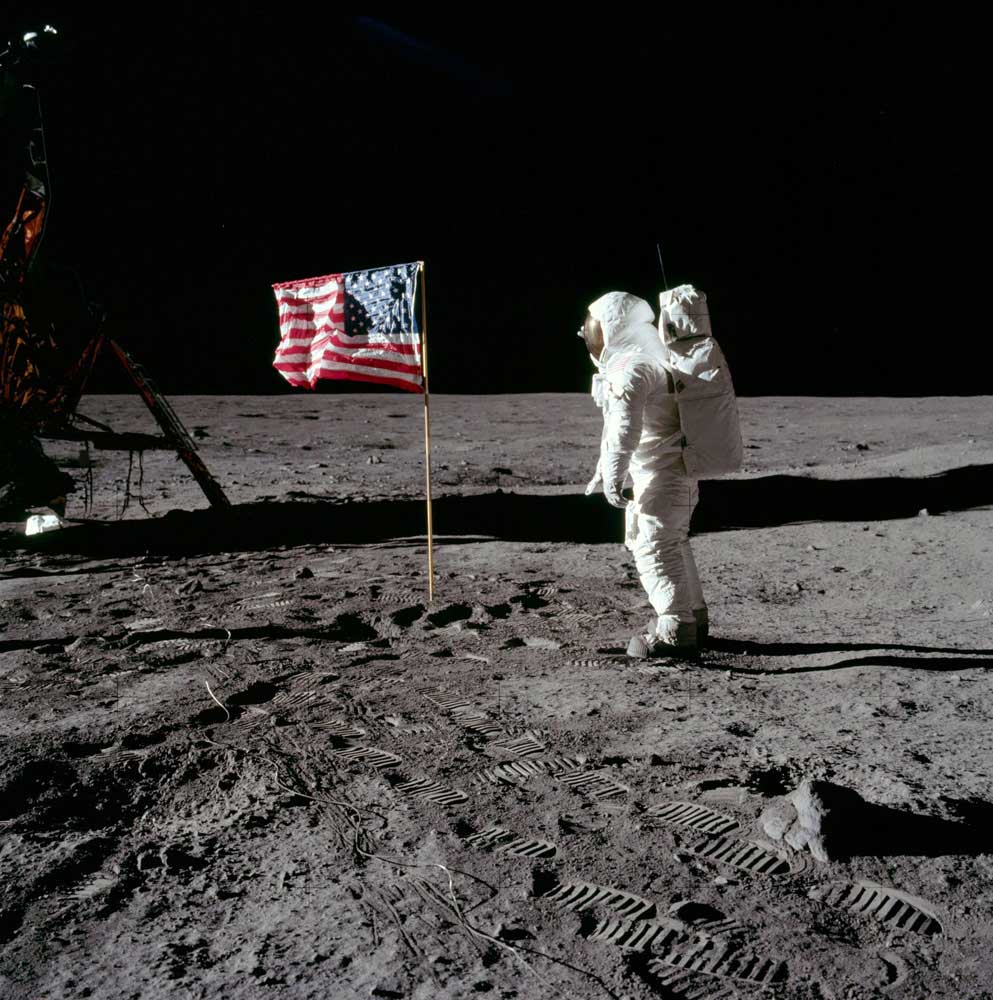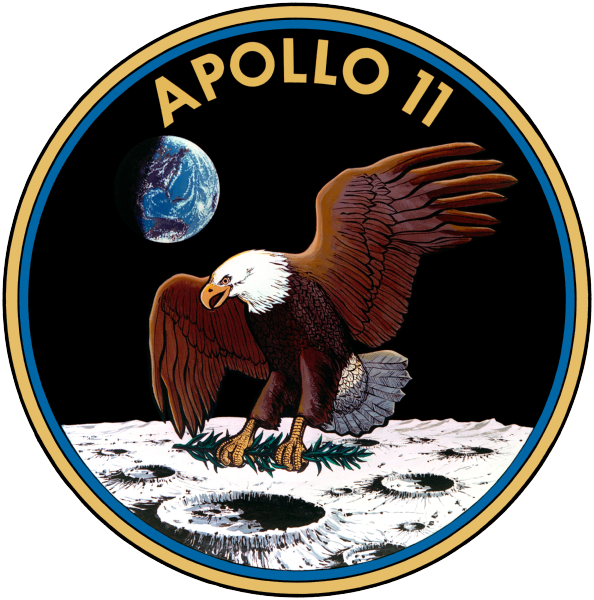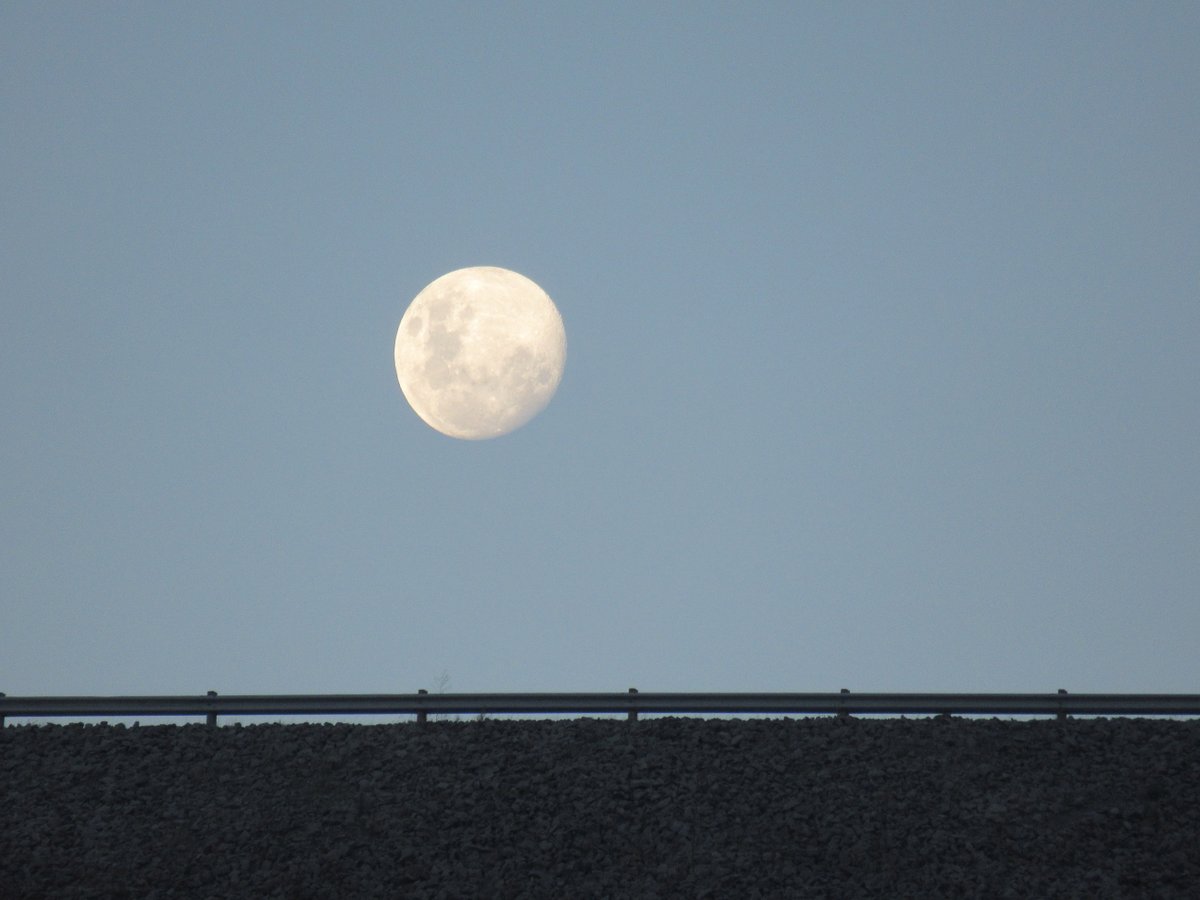Planting a flag on the moon
Last year saw the release of the film First Man, chronicling Neil Armstrong’s personal journey to the moon. Personally, I really enjoyed it.
However, it came in for some criticism for not including the planting of the US flag on the moon. I’d like to discuss why I think that criticism was misguided, but also to discuss what placing the flag on the moon really meant.
Telling Neil’s story
Ultimately, while the film presents the US space program in a positive light, it is not the story of the United States’ quest to reach the moon. It is the story of Neil’s journey to the moon. That meant that it opened dramatically with Neil’s experience on the X-15, spent time on the Gemini 8, and centred the film around Neil’s response to the death of his young daughter. It does briefly show the flag raised next to the Eagle, but of more importance to the story is Neil leaving a memorial of his daughter in a nearby crater.
The film set out to tell Neil’s story, and I think it did it well. I don’t think it should be co-opted to tell a different story. It also seems true to life: To Neil himself, planting the flag was just one task out of many on the check-list. It wasn’t the central moment.
A territorial claim?
Generally, when I think of planting a flag, I think of the colonial idea of asserting a territorial claim. For example, in my own country Captain Cook raised the flag before he left. Later, the first European settlers raised the flag at Sydney Cove (completely ignoring the people already there).
Buzz Aldrin was certainly influenced by this idea. In Magnificent Desolation he talked about childhood pictures of “great explorers planting their flags in their new world”. He also got involved in the controversy over the film, tweeting pictures of him and Neil with the flag on the moon, tagged “proud to be an American”. One of the best pictures of the flag is of him saluting it:

Neil was more cautious. In the book First Man (which the film was based on), he says:
Some people thought a United Nations flag should be there, and some people thought there should be flags of a lot of nations. In the end, it was decided by Congress that this was a United States project. We were not going to make any territorial claim, but we ought to let people know that we were here and put up a U.S. flag.
As it turns out, while there was discussion in Congress, the final version of the relevant bill didn’t pass until 4 November, months after the Apollo 11 landing. However, I think it does make clear why the United States flag was used and what it meant:
The flag of the United States, and no other flag, shall be implanted or otherwise placed on the surface of the moon, or on the surface of any planet, by members of the crew of any spacecraft … as part of any mission … the funds for which are provided entirely by the Government of the United States. … this act is intended as a symbolic gesture of national pride in achievement and is not to be construed as a declaration of national appropriation by claim of sovereignty.
Apollo 11 was certainly an important part of the space race between the US and the USSR, and national pride was on the line. Reaching the moon first was a significant technical accomplishment.
However, neither side wanted to run the risk of an arms race in space. In 1967 both nations signed the UN Outer Space Treaty, which prohibited the making of sovereign claims or the placing of weapons in space. Space was to be a peaceful area for the pursuit of science, similar to Antarctica. While the US could have broken this treaty, it’s likely it would have upset the delicate balance with the USSR. Limiting it to a display of national pride was probably very wise.
For all mankind
While the Apollo project was a national project, people round the world felt part of it. In the words of Neil, it was a giant leap for mankind, not just for America.
Some of the other things Apollo 11 left recognised this. The lunar lander had a plaque with the words “Here men from the Planet Earth first set foot upon the moon, July, 1969, A.D. We came in peace for all mankind”. There was also a small silicon disc with miniaturised messages of goodwill from the leaders of 73 different countries (including Australia).
The conversation between President Nixon and Neil Armstrong also conveyed this message:
Nixon: For every American, this has to be the proudest day of our lives. And for all people all over the world, I am sure they, too, join with Americans in recognising what an immense feat this is. Because of what you have done, the heavens have become a part of man’s world. And as you talk to us from the Sea of Tranquility, it inspires us to redouble our efforts to bring peace and tranquility to Earth. For one priceless moment in the whole history of man, all the people on this Earth are truly one - one in their pride in what you have done, and one in our prayers that you will return safely to Earth.
Armstrong: Thank you, Mr President. It’s a great honor and privilege for us to be here representing not only the United States but men of peace of all nations, and with interests and the curiosity and with the vision for the future. It’s an honor for us to be able to participate here today.
And the mission patch, designed by the Apollo 11 astronauts, showed the US eagle approaching the moon with an olive branch of peace:

In Memoriam
Finally, Neil and Buzz left memorials of some of the casualties of the space race. There was an Apollo 1 patch, remembering the three astronauts killed in the Apollo 1 fire.
But I think more touching are the medals commemorating two dead cosmonauts, including Yuri Gagarin, the first man in space. Though they had been rivals, the astronauts also recognised them as fellow explorers of space.
It could have been worse…
The Man Who Sold the Moon is one of my favourite Heinlein stories. Written long before the Apollo project, it presents a commercial route to the moon. The main character is D.D. Harriman, a millionaire who bets his company and his personal fortune on a dream to go to the moon and later open up space for exploration. While something of an idealist, he is also a hard-headed businessman who knows how to obtain funding and wrangle partners more interested in cold, hard cash.
He starts with national territorial claims on the moon, based on controls of the airspace above the nation. While the moon doesn’t go too far north, he tells Americans that the moon is theirs (thanks to Florida and Texas), and he sets up corporations in other nations under the moon to buy their moon rights. He popularises a song with the line The Moon belongs to everyone, while at the same time controlling a United Nations corporation which will put the moon in the hands of his corporation (outside national control).
However, the story also makes it clear that he is driven by idealism, not greed. He fears that if space is placed under national control it will lead to armaments in space and nuclear war - the very things the later Outer Space Act aimed to stop. In Heinlein’s tale, corporate control was a necessary condition for transcending national borders and making the moon a place of peace for all mankind (sounds great if you have a suitably idealistic person at the helm and they don’t get corrupted…)
While he didn’t place a flag on the moon, he threatened something far worse: Turning the entire moon into a big logo which can be seen from the earth. Moka-Cola were shown a mock-up of the moon with the 6+ logo, while the Department of Defense were shown a moon displaying the hammer-and-sickle. In the story, Harriman opposes this, and I’m not sure it was a realistic proposal - but it did convince Moka-Cola to sponsor the project, and Defense to hurry up regulatory approval. But imagine the effect if someone had really gone through with this cosmic graffiti - at least the American flags on the moon are comparatively unobtrusive from here on Earth…
In Requiem, Heinlein takes Robert Louis Stevenson’s poem Requiem to the moon. Here Harriman makes his motivation very clear:
No, I didn’t want to be rich; I just wanted to live long enough to see men rise up to the stars, and, if God was good to me, to go as far as the Moon myself.
So what happened to the flags?
Neil and Buzz actually had great difficulty planting the flag: They could only get it in about six inches, and were afraid that it would fall over while the world was watching. As it was, when they took off Buzz saw it fall (though that wasn’t made public till years later). Given how much is said now of the importance of the flag, I find it amusing that they couldn’t even make a flag that stayed standing.
The other five Apollo missions that landed planted flags at their landing sites. In 2012 the Lunar Reconnaissance Orbiter showed that there were shadows from the flags at some of those sites (though obviously not the Apollo 11 site). Since the moon doesn’t have the same protection from UV rays as we do, those flags are probably pretty faded by now (perhaps even white).
Who knows, though? There is lots of talk of a permanent human presence on the moon. Perhaps one day those landing sites will be well-known museum sites, places that every moon tourist visits. Today the lunar lander, the flag, and the footprints are symbols to adorn commemorative stamps and coins. Perhaps one day (so long as it is properly protected) the Apollo 11 site will be a part of humanity’s history that everyone can visit.
What comes next?
NASA now have plans to return to the moon as part of their Mars program:
Particularly relevant to this article, I noticed they said “This is not about flags and footprints. This is about sustainable science and feeding forward the advance of the human spirit”. After 60 years, they say, they’re just getting started.
In his 4th July speech this year, President Trump invoked the Apollo 11 spirit, and linked it to patriotism, the flag, and the planned Mars mission:
For Americans, nothing is impossible. Exactly 50 years ago this month, the world watched in awe as Apollo 11 astronauts launched into space with a wake of fire and nerves of steel, and planted our great American flag on the face of the moon. … I want you to know that we’re going to be back on the moon very soon, and, someday soon, we will plant the American flag on Mars.
In 1969, the United States said the Apollo flag planting was a “symbolic gesture of national pride in achievement”. However, I’m not sure those who are now venerating the flag limit it to that. I think that’s why they criticise First Man for telling Neil Armstrong’s own story rather than subsuming it into the American story: They have decided the national story is the only story that counts.
Any attempt to make a flag in space more than a symbolic gesture makes me nervous. Yes, we have the Outer Space Act, but D.D. Harriman’s vision of armaments in space is still a possible future, as is a nuclear war over control of the moon.
Even at the national level, the United States wasn’t the only player during the space race, and it’s still not. The Soviet Union and China have both put rovers on the moon (China even put one on the far side of the moon earlier this year). Other nations have crashed rockets into the moon. Perhaps one day we will see these nations landing humans who plant their own flags and leave their own footprints. And hopefully these different nations can work together.
Beyond national control, the option Harriman took - having a corporation in charge of the moon - also remains possible. OK, perhaps not one corporation - but I think it’s quite possible that one or more multi-national corporations end up with control of large sections of the moon. And they’re unlikely to have Harriman-style idealists at the helm trying to protect the interests of humanity.
The moon belongs to everyone
Last month, I took one of my favourite photos of the moon:

Think about it: I didn’t have to pledge allegiance to any particular flag to take that photo. Nor did I need to travel to any particular country to see it. The moon is one of our shared treasures, which brightens up the sky all over the world.
As I write this, it’s after midnight and just past full moon, and I can see the man in the moon smiling down on me. And I know that, irrespective of their religion, nationality, or language, humans around the world see the same moon in the night sky as I do.
As far as I’m concerned, the moon is a much more universal image than any flag. The idea of painting the surface of the moon may just be science fiction, but I don’t want it to display the hammer-and-sickle, or the sign of the cross, or a company logo, or text in any language. Nor do I want to see weapons or national power on display up there.
In the words of Harriman (a US citizen):
The Moon was not meant to be owned by a single country, even the United States.
Reaching the moon was (and is) an amazing technical accomplishment, and I think national pride in that achievement is justified. I don’t mind that pride being shown in planting flags. Similarly, if corporations can make a sustainable business model out of reaching the moon I think they can be justifiably proud of their efforts, and are entitled to show that pride with appropriate memorials. But they shouldn’t control the moon.
I don’t know what the future of the moon looks like. However, I hope that it can be a place that brings humanity together, not a place that drives us apart.